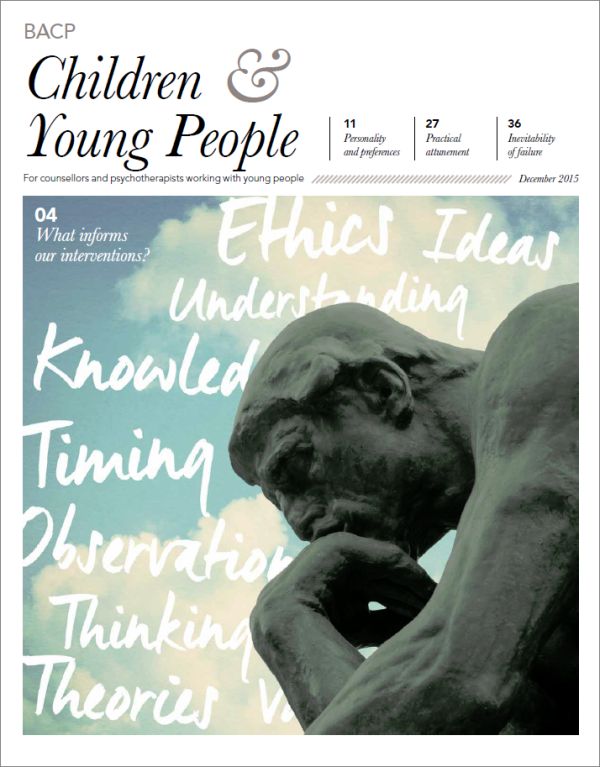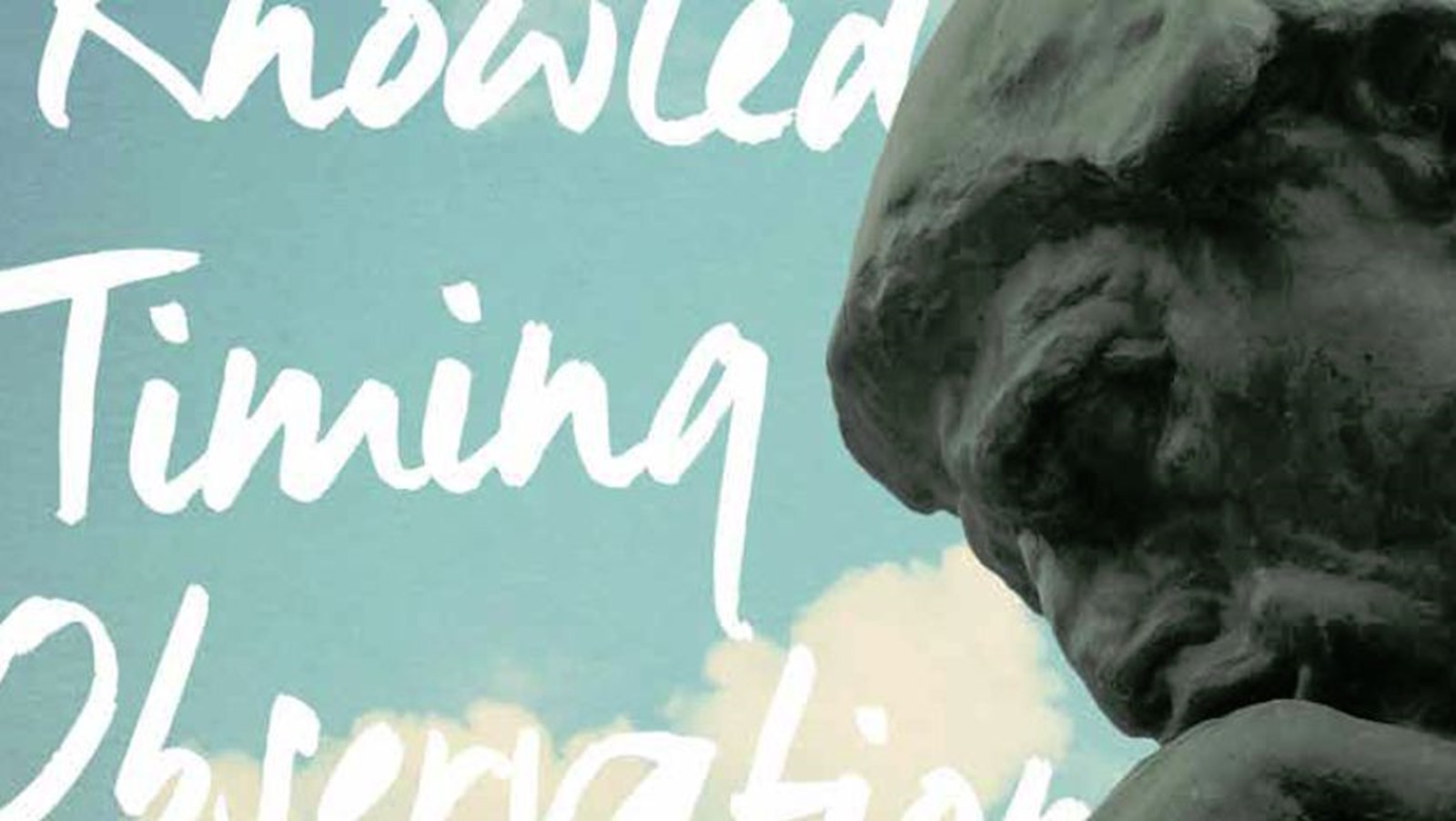In this issue
Features
What informs our interventions? (free article)
Carol Holliday discusses the ingredients of professional knowledge
Appearance and its message (free article)
The embodied self can guide our work as counsellors, writes Laura McDonald
In practice
Personality and preferences
Karen Harvey explains how understanding the MBTI type indicator can help us in our work with young people
Aggression and young people
John-Henry Carter offers an understanding of aggressive impulses, and reviews case material
Practical attunement
Techniques and approaches within a framework of attachment theory. By Stephanie Hutton
Issues
Training – the reality
Nick Ball reflects on his time in training
Self-injury, starving and chaos
Sue Jennings believes that lack of borders lies behind many challenges of self-harm and eating distress
Just to say that I’ve failed… again!
Nick Luxmoore notes society’s defensive habit of denying the inevitability of failure
Regulars
Reflecting on… foreign bodies
Jeanine Connor
Thinking about… fun in supervision
Anna Jacobs
Considering… our need to be interesting
Nick Luxmoore

A pdf of this issue is available in the BACP Children and Young People archive.
Welcome
I was engrossed in reading The Watchmaker of Filigree Street, by Natasha Pulley, when Carol Holliday sent over the article she had agreed to write around the idea of clinical competence and therapeutic intent within the broader question of what constitutes professional knowledge.
Reviewers have described Pulley’s book as unique – as is any book, of course – but my immediate mental leap connecting it to Carol’s article was on account of the way the story brings together an immigrant Japanese watchmaker, a Home Office telegraphist and a lady theoretical physicist in 1880s London, and intertwines them in the most curious, ingenious and beguiling way (with the help of a clockwork octopus and some Gilbert and Sullivan) to make that ‘uniqueness’. In the same way, Carol considers the main ingredients that are taught on courses for counselling children and young people and argues that each alone is necessary but does not in itself create professional knowledge. Contingent response requires judgment, she says, and then introduces us to phronesis or practical reasoning – the development and contextual practice of which gives each client-therapist encounter a uniqueness that can never be replicated in manualised, parcelled-up treatments. For me, the thrill of reading something as individual as The Watchmaker is akin to the thrill of meeting an individual child’s challenges by using what I have learnt from all my encounters and metabolising it exquisitely for just that one encounter. Nothing compares. And I now know the word ‘phronesis’ to help describe what happens. It was a pleasure to read Carol’s article and I hope that you, too, will find it thought-provoking and encouraging.
Less encouraging, but also food for thought, are two recent press items. One, that teen girls spend on average 12 minutes preparing for each selfie and measure their self-worth in ‘likes’ – getting around 26 affirmations per posting but desperately hoping to hit 43.1 And two, that leading independent schools are now employing more counsellors to help children cope with their anxiety to appear popular on social media (among other stresses).2 We know about social-media-itis – it regularly presents in our rooms– but seeing it quantified and made official in this way is still scary. For these and all our clients, we need to do what Laura McDonald describes so vividly: take the presenting appearance of the client (whether confident or reticent, dressed up or down, garishly or in faded, misshapen clothes) to use as a starting point and then help them understand what’s happening for them and why. They can then adjust to and become part of the world in a positive, healthy way – which is what they usually wish to do. With or without their smartphone.
However, I recall a tweet in early September as schools were starting back, which said something along the lines of: ‘Don’t confuse my personality with my attitude. My personality is who I am. My attitude depends on who you are.’ I hope teachers are remembering this truth, but it also reminded me so much of the characters in The Watchmaker who, early on in the book, display serious ‘attitude’ for very understandable reasons, but eventually show their real personalities confidently – and most satisfactorily. I wish this for all our clients as we work with them via a unique relationship, grounded in our own professional knowledge.
Eleanor Patrick
Editor
References
1 News bulletin. Teenage girls’ selfie routine takes hour and a half a week. The Daily Telegraph 2015; 7 October: iPad edition.
2 Espinoza J. Pupils seek counselling for social media anxiety. The Sunday Telegraph 2015; 4 October: iPad edition.
